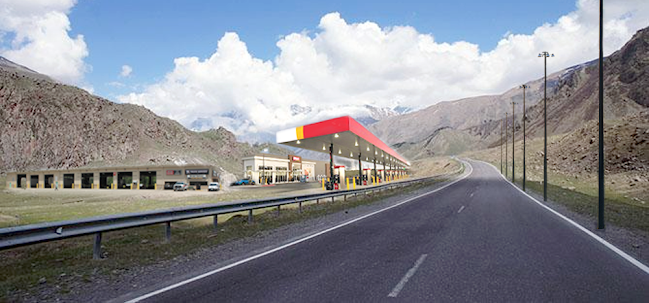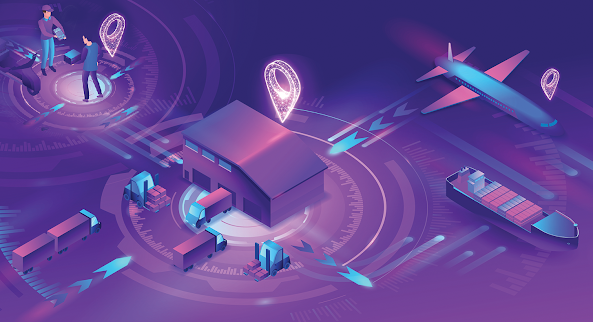Vertical Corridor – VISION
Thanks to
the previous Blog ( https://bit.ly/3grswro
), our followers are already acquainted with the South-North international
route, that passes through Georgia. Named it by us as Vertical Corridor,
we discussed its importance and interesting insights around it. Today, we would
like to brainstorm the potential it really bears and its possible positive outlook.
As
mentioned, an average of 800 freights pass the route in both directions during 24-hour.
The toughest part of the South-North route is the Kvesheti-Kobi-Gudauri
road. During the winter season, the road is often closed due to heavy snowfall and
a high risk of avalanches. As for warm seasons, complicated traffic regulations
are needed, because narrow roads and tunnels do not permit big size road trailers
to bypass each other. To avoid a road jam, police have to close each of the lane
senses alternately on winding serpentine road on the Gudauri pass with sharp narrow
turns which do not forgive mistakes.
That
is why, while traveling in the Tbilisi-Dariali direction, one can often witness
in many places, long rows of parked freights alongside the motorway. Such spaces
are called “Road Pockets”. They are being used as temporary parking lots for road
freights during various emergencies on the road. Mandatory stops could last several
days or even weeks. During the period drivers naturally need food and drink, not
to mention other simple commodities. Today, unfortunately, there are no special
road stations for freights on the Vertical
Corridor. Drivers have to spend all this period in their trucks
at the road pockets consuming prearranged provisions, dumping the waste in nature
and wait for permission to drive.
Now
let us imagine what best solutions could be implemented for better management of
the Logistics on Vertical
Corridor. What if there are well-organized road stations especially
for trucks where without polluting the surrounding area, drivers could have basic
commodities and simple conditions?! Local villagers could be employed in such stations,
while nearby farmers could provide various food supplies and market products. The
system could be an economic relief for sideway villages. It is worth mentioning,
that today, there are no proper dining and rest areas either on the route. Everything
existing up to date is fitted only to tourists. However, the infrastructure is not
suitable for lorry convoys and cannot meet their requirements.
It
is surprising, but within 130 km distance - from the resort Natakhtari until
the Resort Kazbegi, you will
not get across with a single car repair service center either. Trucks are not available
to have a professional helping hand in case of malfunctions, which, by the way,
occur quite often due to extremely high vehicle overburden on the geographically
tough road. Drivers are left alone to handle technical issues. They can rely on
their colleague’s goodwill at most. Such centers would not only enhance the safety
and logistics process but could be also useful for locals as well. A nearby farmer
could rent his land or even get employed in a service center, or she or he could
establish some kind of small marketplace or even a Guesthouse nearby.
Another
important issue is the road infrastructure itself. For instance, night illumination,
safety barriers, special escape areas on the steep downhill and uphill. No refueling
station is located on the road either (only
a handful of handicraft places selling the fuel in a vessel). To sum
up, a well-developed route would increase the quality and speed of transportation,
as well as safety and environmental condition, therefore overall well-being of settlements
alongside the route.
The
broader vision of the Vertical Corridor development could benefit neighboring regions
as well. Near the Resort Passanauri, there is a deviation to Valley Gudamakari. Despite
the vicinity to the capital, today this valley is a kind of dead-end gorge that
cannot take part in any kind of economic and logistics affairs. It is quite possible,
that any of the above-mentioned facility was situated in Gudamakari valley. In this
case, A lorry would deviate from the main route, not more than by 1-or-2 km, and
later would return on to the main road. It is a common practice in western European
countries, especially in mountainous ones, such as Norway, Swiss, or Austria.
We
cannot miss the fact that part of these problems will be eliminated after the completion
of the Kvesheti-Kobi-Gudauri road project in 2024. It is currently under construction
by the MRDI of Georgia.
The project includes several bridges and tunnels, one with a 9 km length. We would
like to emphasize that our company contributes to the project greatly, but let’s
talk about it later. Yes, problems will be solved, but again, partially, because
truckers being on their way for days need to stop anyway. Besides, they are never
secured from any unavoidable occurrence during which it is vitally important that
vertical corridor was developed and advanced.




Comments
Post a Comment